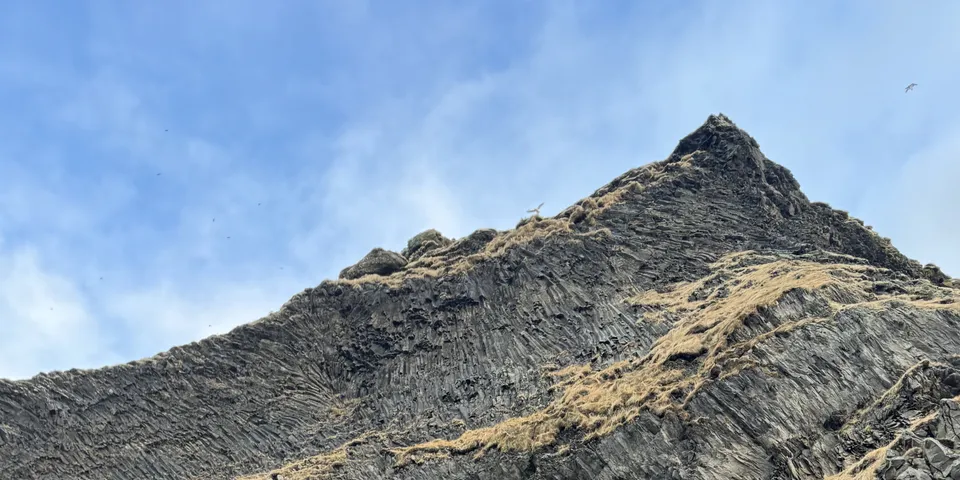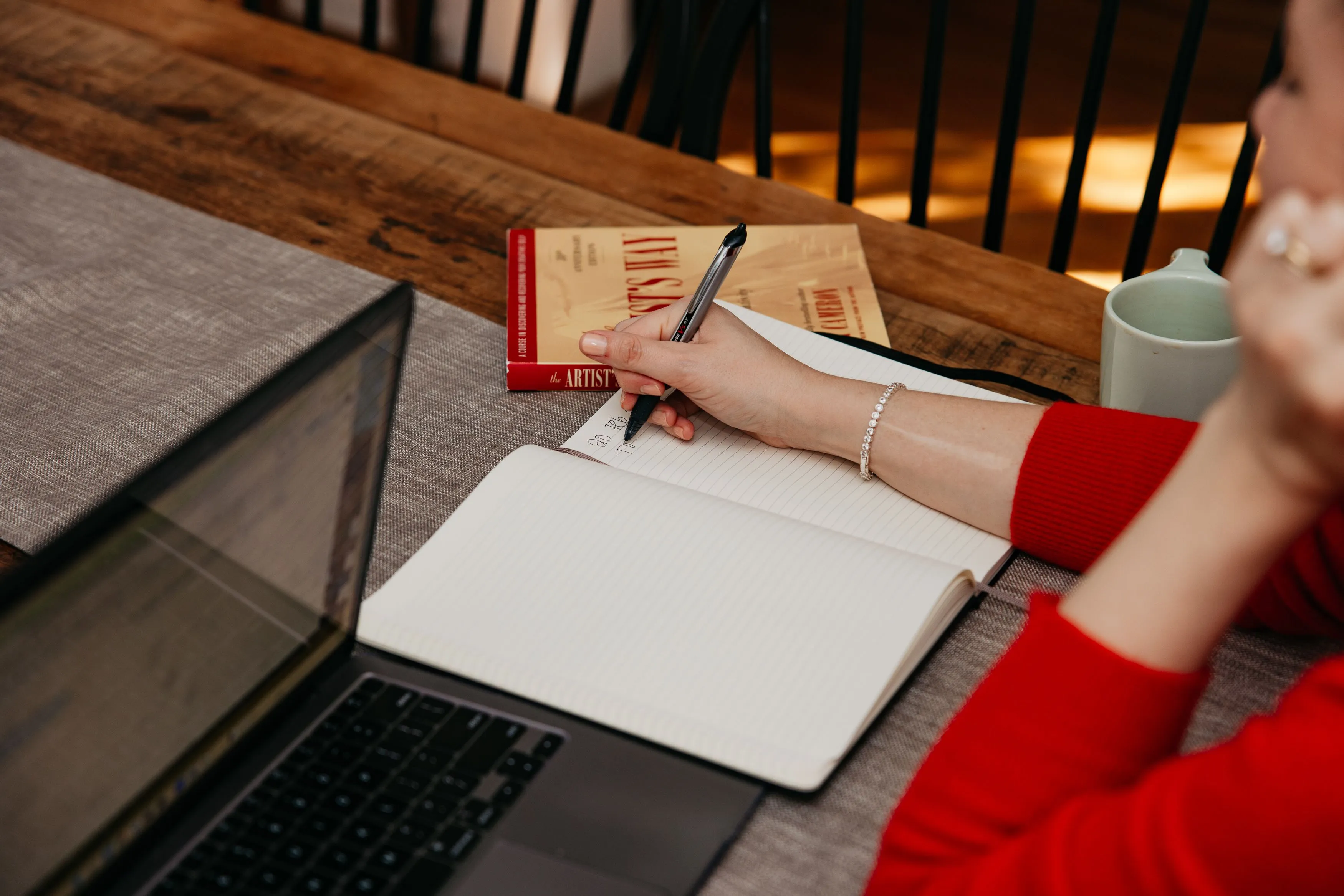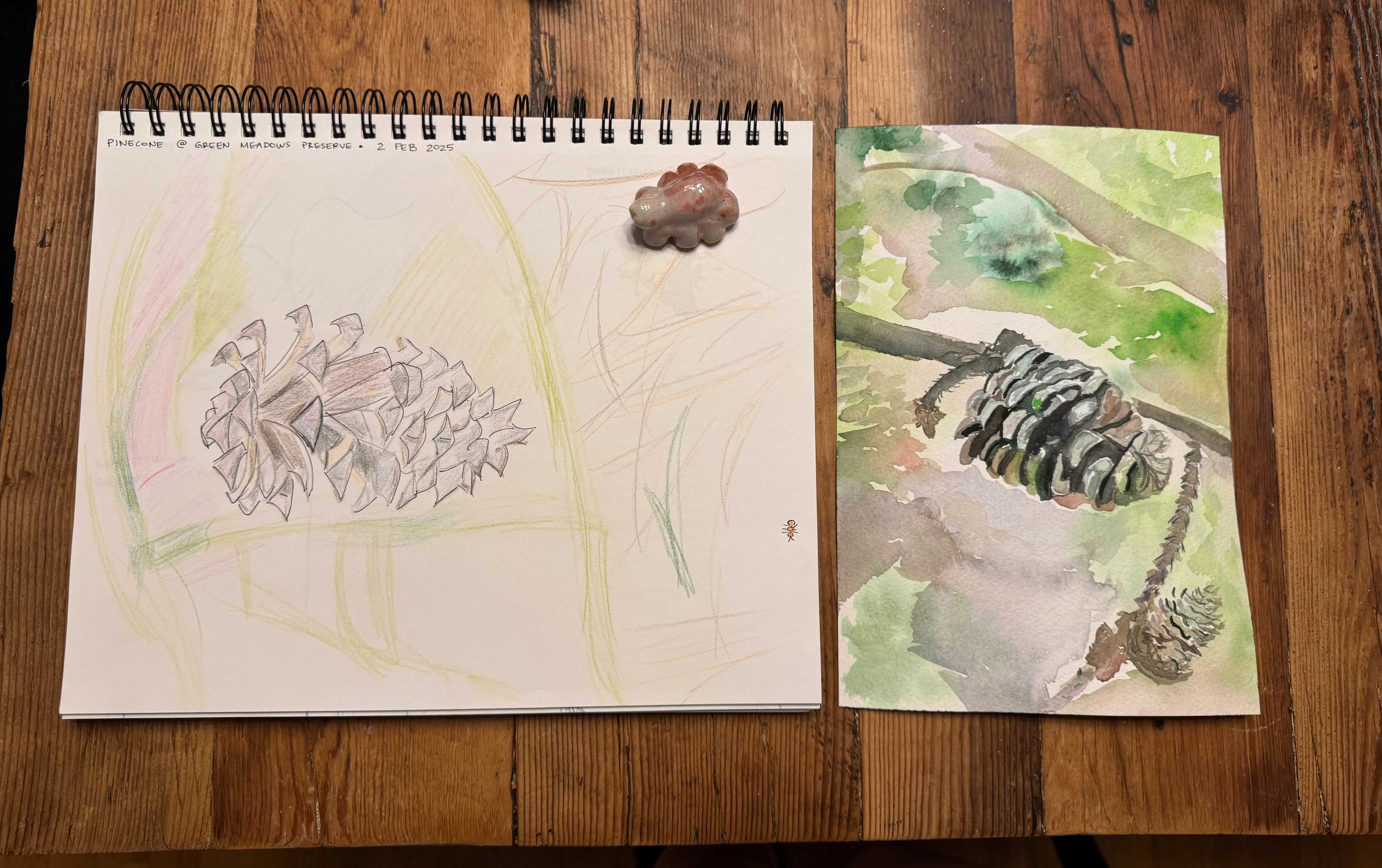
After The Artist's Way
Today marks 90 days since I successfully completed The Artist’s Way.
The Artist’s Way: A Spiritual Path to Higher Creativity by Julia Cameron is a 12 week program in the shape of a workbook designed to help you discover and recover your creative self.
 Working on those Morning Pages
Working on those Morning Pages
After trying (and failing) to complete The Artist’s Way several times in the past, I finally decided to join a WhatsApp community of women who were working through the book together. We celebrated our virtual finish line party in May.
When you get to the end of the book, you’re presented with a Creativity Contract. You’re supposed to commit to continuing the tools of the program (daily Morning Pages journaling, weekly Artist Dates) for another ninety days. You’re also supposed to identify an area you want to explore, lock in an action plan, and find an accountability partner for weekly phone check-ins.
As such, you’re not really done with The Artist’s Way until 12 weeks after you get through the book for the first time.
Now, I should come clean: my Creativity Contract in the back of my workbook remains unsigned. When I got to the end of the program, I wasn’t ready to phone a friend with updates every week.
But I do know that finishing this book changed my life.
It’s an imperfect text. Some of the author’s guidance is out-of-touch and out-of-date. There are elements of Prosperity Gospel that give me pause. If you’re familiar with 12-step programs for addiction, you may find some content eerily familiar. And the way the book incorporates spirituality head-on could be triggering or alienating for many.
Despite all the flaws, I know the 12 weeks of reading, journaling, and intentionally pursuing creativity was healing for me. When I think about this book stacked on top of years of talk therapy and various coaching programs, The Artist’s Way (TAW) delivered the most bang for the buck in terms of useful tools and transformation.
In this post, I’ll share:
- What I took from the program personally, and
- What I’d recommend if you’re starting TAW
What I took from The Artist’s Way
At a high-level, TAW helped me:
- Heal my God concept
- Make peace with purposelessness
- Incorporate art as self-care, and
- Re-shape my relationship to work
Healing my God concept
One of the Big Uncomfortable things about the book is how capital “G” God is front, center, and core to the material. The book opens with a set of Basic Principles which assert the existence of a divine Creator.
Creativity is God’s gift to us. Using our creativity is our gift back to God.
I was raised in a Baptist church. I got roped into evangelical Christianity in middle school and proceeded to cause a lot of harm to myself and others in God’s name before removing myself from that environment.
As an adult, I’d say I still identify as a Christian. I believe in God because I want God to be real, and the wanting is proof enough for me. But I don’t attend church because I’m uncomfortable with how the institution operates, festering shame and judgment while creating a stage of power for narcissists, misogynists, and perpetrators of abuse. It doesn’t feel like a safe space for me.
For years, I was okay with being a non-churchy religious person. But recently, the current events and horrors on the news just completely broke whatever faith I had left.
I know, logically, that dehumanization, oppression, terror, war, violence, famine, and genocide are things that are happening all over the globe all of the time. But for whatever reason, when the attacks happened that October and I saw videos of little children crushed under buildings, their legs shredded to pieces in response, it sank in for me that this cycle of violence repeats forever and has no end.
Where is God in all the world’s suffering?
In Matthew 22:36-40, Jesus tells us the Greatest Commandments are simple:
- Love God with all your heart, soul, and mind
- Love your neighbor as yourself
Humanity seems endlessly incapable of doing either.
Meanwhile, people continue to weaponize the fear of God to enforce rules and hierarchies that seem polar opposite to the teachings and values of Christ.
It’s enough to drive you mad.
Grief made me angry at God, and I felt God owes us all an apology. I couldn’t reason out what was worse: an all-powerful God that allows people to do terrible things but then creates space for their forgiven souls to spend eternity in Heaven? Or, no God and no Heaven at all?
TAW gave me permission to create an entirely new image of God, one that is loving, nurturing, and safe. A positive, creative energy (dare I say, Holy Spirit?) that flows through us.
Maybe my new God is just another idol, sacrilegious as hell. But I’ll take that over nothing, until proven otherwise.
Making peace with purposelessness
Around the same time that my faith was crashing out, I started to suffer what I’d call a Crisis of Purpose.
What is your purpose in life?
I think for a lot of adults the answer here is easy: their children give their life meaning, focus, and purpose.
A lot of my favorite creative leaders include parenthood as a theme in their books, blogs, and podcasts because it’s such an anchor for them. Managers post about how they re-use tactics they developed with their toddlers to manage teams of employees, and one of my past colleagues even posted on X about how non-parents are the epitome of “non-player characters.” That’s how deeply parental status is tied to the broader definition of success in our society. The message is: If you don’t have kids, you don’t count. You’re a “junior adult.”
But, what if parenting is not in the cards for you? You still have to co-exist alongside all the purpose-filled parents for another 40 years! What is your role then?
I’ve been Daughter, Granddaughter, Great-granddaughter, Sister, Cousin, Friend, Babysitter, Co-worker, Roommate, Girlfriend, Wife, Auntie, and Godparent. Some of these roles are meaningful, but I’d never say my primary purpose was to fulfill them.
Everybody wants to believe they have a good reason to be here. Like many millennials who grew up in the Do What You Love era, I keep searching for my Ikigai, some kind of magical intersection of passion, skill, and value that will make life worth living.
And yet.
The older I get, it seems less and less likely any of my gifts will coincide with what the world needs to form a worthy path.
Through The Artist’s Way, I was able to make peace with this lack of direction.
It’s okay to exist without a clear, driving purpose. I didn’t need a good reason to be born (my parents insist they hardly considered the consequences / “It was the 80’s!”), and I don’t need a purpose to survive this day.
It’s okay if my purpose is simply to be a witness to God’s creation and create some goodness in this world. Until proven otherwise.
Which leads me to…
Art as self-care
When your faith is hanging on by a thread and you have no strong purpose in life, taking care of yourself can feel rather daunting.
I have a rigorous set of interlocking systems I use to manage my own neurodivergence and existential depression. Sleep, exercise, meal planning, inventory management, calendars, yoga… all carefully organized to make being alive as painless as possible.
But I didn’t realize how desperately my systems were missing ART. Not just consuming or appreciating art but creating art.
I have level 5 aphantasia, which means I can’t visualize things in my mind’s eye at all. I can only conceptualize them. The total inability to visualize makes it hard for me to stay engaged during traditional forms of meditation that other people swear by.
However! Thirty minutes of drawing or painting is a form of hands-on meditation that leaves me feeling refreshed and energized.
Unlike writing prose or poetry, which can deepen my negative thought patterns, painting is an incredibly neutral practice. What does that object look like? What is that shape? Where is the light?
Does the painting suck? Who cares! Set it aside. Paint over it. We can paint something else tomorrow.
Before TAW, I did not draw or paint. Now I paint every day because it’s part of what I need to feel healthy.
 A painting of a pinecone from this morning, alongside a drawing from my first Artist Date and a totem called “Tarantula”
A painting of a pinecone from this morning, alongside a drawing from my first Artist Date and a totem called “Tarantula”
Re-shaping my relationship to work
In TAW, there is an entire chunk of text on workaholism which wraps up with a quiz:
- I cancel dates with loved ones to do more work: seldom, often, never
- I postpone outings until the deadline is over: seldom, often, never
- I allow myself free time between projects: seldom, often, never
- I prioritize my day to include an hour of creative work/play: seldom, often, never
and so on.
I’ve been working some job or another since I was 14. Nanny jobs. Office jobs. Customer service jobs. Startup jobs. I always want to do a good job which means I often end up taking on more work than I should, and prioritizing work over life events.
I’ve said “no” to invites so I could crunch for launches. I’ve postponed overdue vacations so I could attend in-person planning.
At my first startup job, I got dragged for taking my laptop to a party. There I was, sitting on the floor, fixing HTML for a customer while everybody else played beer pong and jammed out to Carly Rae Jepsen.
Just last month, I was attending my niece’s 4th birthday party. The host took two work calls over airpods in between setup and cupcakes. I left early because I was too anxious to stay away from Slack for even an hour.
Which is to say: I’ve always had unhealthy boundaries with work. And it’s not just me. It’s the whole dang industry.
Right now, in New York and the Bay, startups are rolling out 996 work schedules. People on LinkedIn are brag-posting about working from the beach during family vacations. They call this “work life integration.”
All I know is—performing hard work has never protected me. It has only ever led me to burnout.
In The Artist’s Way, Julia Cameron is flippant about work. Work is treated like an inconvenience, something that must be done but that shouldn’t interfere with your true priority which is creating art.
If you are working too many jobs and too many hours…raise your prices and lower your workload.
How rich! But…maybe Julia’s onto something here?
It’s not easy but I am trying hard to:
- Joyfully create space for work in my life—instead of fitting in a little life outside of work
- Give personal creative endeavors equal priority alongside work commitments
- Pursue work that feels less punishing and more fun
It’s okay if I take big breaks between projects. It’s okay if my income is lumpy and unpredictable. It’s okay if I never get a big promotion to Director or VP. (That stings to type out, but I know it’s true.)
At the end of the day, I am an Artist, and my career won’t look as linear and continuous as it does for other people. I can accept this.
Maybe you’re an Artist, too?
If you want to try The Artist’s Way
You will need:
- A copy of the book
- A physical notebook – I recommend a smaller size notebook with ruled pages, like the 5 x 8.5 inch Moleskine if only so your Morning Pages will take less time
- Pens – I prefer the Pilot Precise v5 retractables
You will also need:
Petty cash to fund twelve Artist Dates
It’s great if your idea of an Artist Date is walking down to the park or wandering around in the woods for $0.00, but if you want to embrace the more overtly consumerist aspects of TAW you will probably want between $10 and $30 per week for coffee, treats, museums, trinkets, or supplies.
Lots of time
Depending on how fast you write your Morning Pages and work through tasks, you will probably spend two hours each day just on exercises. Slap on an Artist Date each week and you’re looking at between 16-20 hours per week to get through the program; it’s basically a part-time job.
With that in mind, don’t worry about trying to complete the program perfectly. Julia Cameron will assign you more tasks than are reasonable to accomplish. If life happens and you miss a week, pick back up where you left off.
Do try to time your kickoff so that Week Four lines up with a “dead week” at work. Week Four calls for a week of total Reading Deprivation, which many people interpret to include other forms of media like TV or social media. This is REALLY hard to accomplish if you’re also reading Slack and emails or working on a launch. A lot of people give up at this step, and the best way to overcome it is to plan ahead.
To maximize your chance of success, you may also want to join a community.
I did my Artist’s Way run with a group called Creative Spaghetti, but there’s also an active sub-reddit with thousands of members.
Consider this an invitation! If you’re ever working through The Artist’s Way and looking for a creative colleague to check-in with over a standing phone (or Zoom!) call, I’m your girl.
But BE WARNED. Once you get introduced to The Artist’s Way, you will only find more people who have completed the program. For example, I recently mentioned it offhand to my brother and he laughed because he did it during his B.F.A.
There are secret artists all around you. What kind of artist will you find when you start looking inward for yourself?